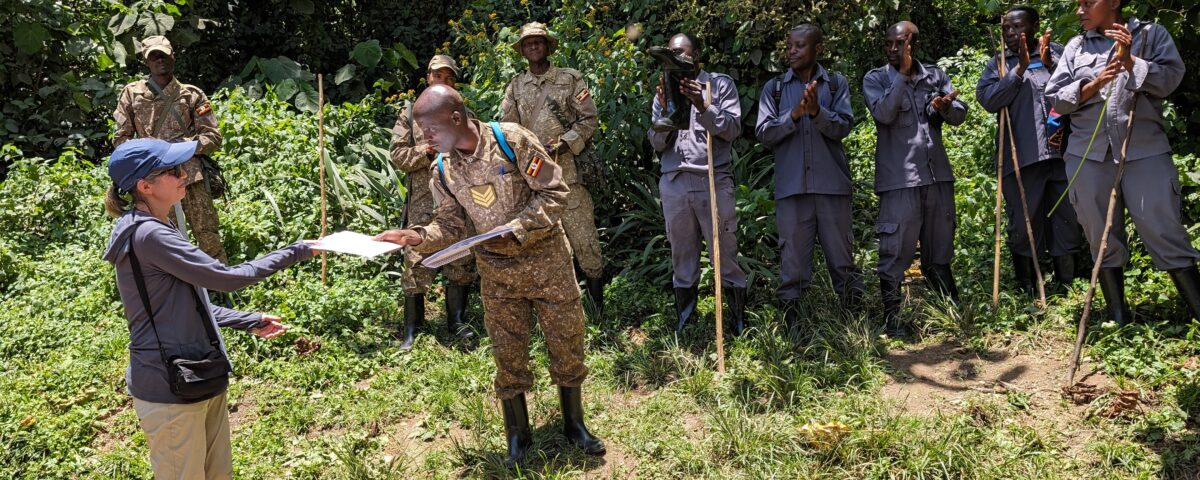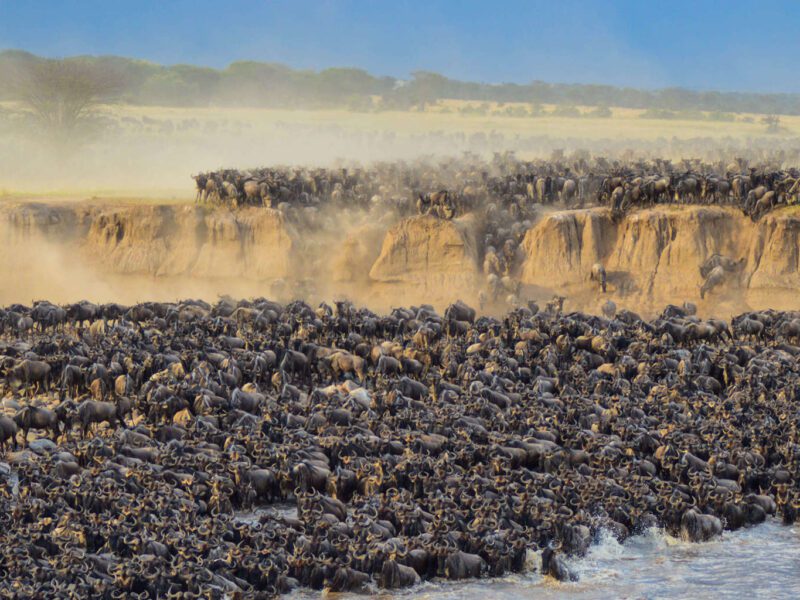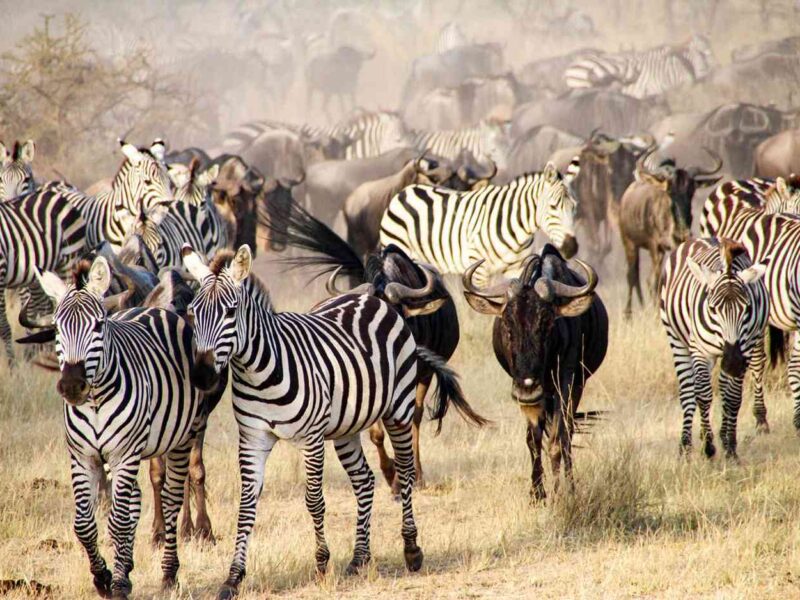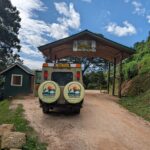
Experience Chimpanzee Habituation
September 1, 2024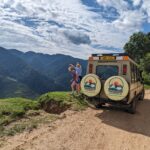
Africa Safari with Gorilla Trekking
September 3, 2024Chimpanzee Tracking in Uganda: A Thrilling Adventure Through the Heart of the Wild
Embark on a thrilling journey through the dense and verdant rainforests of Uganda, where the air is alive with the sounds of the wild and the promise of unforgettable encounters. Chimpanzee tracking in Uganda offers an exhilarating experience, allowing adventurers and wildlife enthusiasts to observe these intelligent and charismatic primates in their natural habitat. Guided by seasoned experts, this adventure offers more than just a glimpse of the fascinating world of chimpanzees—it’s a deep dive into the heart of primate conservation. Whether you are a seasoned traveler or a first-time visitor, chimpanzee tracking in Uganda is a must-do activity, leaving you with memories that will last a lifetime.
The Allure of Chimpanzee Tracking in Uganda
Uganda, often referred to as the “Pearl of Africa,” is a biodiversity hotspot, home to an array of wildlife species, including several primate species such as the common chimpanzee (Pan troglodytes). The country’s rich and diverse ecosystems provide ideal conditions for observing these remarkable creatures in their natural environment. Chimpanzee tracking is particularly popular among tourists who are not only interested in wildlife but also in contributing to conservation efforts. This immersive experience offers a unique opportunity to witness the daily lives of chimpanzees—watching them swing from tree to tree, interact with each other, and forage for food in the dense undergrowth.
One of the most renowned destinations for chimpanzee tracking in Uganda is Kibale Forest National Park, often hailed as the primate capital of the world. However, Uganda boasts several other prime locations for this activity, each offering a distinct experience.
Key Considerations for Planning Your Chimpanzee Tracking Adventure
When planning a chimpanzee tracking adventure in Uganda, several important factors should be taken into account to ensure a safe, enjoyable, and responsible experience. From selecting the best location to understanding the regulations and securing permits, thoughtful planning is essential.
Choosing the Best Location: A Primate Paradise Awaits
Uganda offers multiple locations for chimpanzee tracking, each with its unique characteristics and appeal. While Kibale Forest National Park is the most famous destination, other locations such as Budongo Forest Reserve, Kyambura Gorge in Queen Elizabeth National Park, Kalinzu Forest Reserve, and Ngamba Island Chimpanzee Sanctuary also provide exceptional tracking opportunities.
- Kibale Forest National Park: Located in western Uganda, Kibale Forest is a lush and dense tropical rainforest, home to over 1,500 chimpanzees. This park offers both morning and afternoon tracking sessions, with experienced guides leading small groups of visitors deep into the forest to locate and observe the chimpanzees. Kibale is not only known for its chimpanzees but also for its diverse primate population, including colobus monkeys, red-tailed monkeys, and grey-cheeked mangabeys.
- Budongo Forest Reserve: Situated within the Murchison Falls National Park, Budongo Forest is another prime location for chimpanzee tracking. This forest is the largest mahogany forest in East Africa and is home to a thriving population of chimpanzees. The guided treks in Budongo provide a more intimate and less crowded experience compared to Kibale, making it an excellent option for those seeking a quieter adventure.
- Kyambura Gorge: Often referred to as the “Valley of Apes,” Kyambura Gorge is located in the southern part of Queen Elizabeth National Park. This steep, forested gorge is home to a small but habituated group of chimpanzees. The tracking experience here is unique, as visitors navigate the gorge’s dramatic landscapes while searching for the chimpanzees.
- Kalinzu Forest Reserve: Located near Queen Elizabeth National Park, Kalinzu Forest offers a more rugged and off-the-beaten-path chimpanzee tracking experience. The forest’s hilly terrain and dense vegetation provide a challenging but rewarding trek, with the opportunity to observe a habituated group of chimpanzees in their natural environment.
- Ngamba Island Chimpanzee Sanctuary: For those who may not have the time to venture into the more remote forests, Ngamba Island Chimpanzee Sanctuary on Lake Victoria offers a unique opportunity to observe chimpanzees that have been rescued and are undergoing rehabilitation. The sanctuary provides day trips from Entebbe, where visitors can learn about the efforts to rehabilitate and care for orphaned and rescued chimpanzees.
Securing Your Permit: A Crucial Step in Your Adventure
To track chimpanzees in Uganda, a permit is required. These permits are issued by the Uganda Wildlife Authority (UWA) and are essential for ensuring that tracking activities are conducted in a sustainable and controlled manner. It is crucial to book your permit well in advance, as the number of permits issued daily is limited to minimize the impact on the chimpanzees and their habitat.
Permit prices can vary depending on the location. For instance, permits for Kibale Forest National Park typically range from $150 to $200 for international tourists, while those for Budongo Forest Reserve may cost between $80 and $100. It’s advisable to check the current rates with the UWA or your tour operator, as prices may change over time. Additionally, permit fees often differ for international tourists, East African residents, and Ugandan citizens, so it’s important to confirm the applicable rate when booking.
Understanding the Guidelines: Protecting the Chimps and Their Habitat
Chimpanzee tracking is a highly regulated activity, with strict guidelines in place to protect both the chimpanzees and their natural habitat. Visitors are required to follow these guidelines closely to minimize disturbances and ensure the safety of both humans and animals.
Some of the key guidelines include:
- Maintaining a safe distance: Visitors are required to keep a distance of at least 8 meters (26 feet) from the chimpanzees at all times. This helps prevent the transmission of diseases between humans and chimpanzees and reduces stress on the animals.
- Avoiding feeding the chimpanzees: Feeding chimpanzees is strictly prohibited, as it can disrupt their natural foraging behavior and lead to dependency on human food.
- Health precautions: Visitors who are feeling unwell, particularly with symptoms of respiratory illnesses, should refrain from participating in chimpanzee tracking. Chimpanzees are susceptible to many human diseases, and avoiding contact when ill helps protect their health.
- Group size and time limits: Tracking groups are kept small, usually no more than 8 people, and time spent with the chimpanzees is limited to one hour. This helps reduce the impact on the chimpanzees and ensures that the experience remains sustainable for future visitors.
Fitness and Age Considerations: Preparing for the Trek
Chimpanzee tracking can be physically demanding, requiring participants to navigate uneven terrain, steep slopes, and dense vegetation. It’s important to assess your physical fitness before embarking on a tracking adventure. While the treks can be challenging, they are accessible to most people with a reasonable level of fitness. However, those with mobility issues or young children should carefully consider the difficulty level and consult with park authorities or tour operators to choose a suitable trek.
When to Go: The Best Time for Chimpanzee Tracking in Uganda
Uganda’s equatorial climate allows for chimpanzee tracking year-round, but certain seasons offer better conditions for this adventure. Understanding the pros and cons of each season can help you choose the best time for your chimpanzee tracking experience.
Dry Season: Optimal Conditions for Tracking
The dry season, which occurs from June to August and December to February, is generally considered the best time for chimpanzee tracking. During these months, the weather is more predictable, with fewer rain showers and drier trails, making the trek more comfortable. Additionally, the chimpanzees are often easier to spot, as they tend to congregate near water sources during the dry season.
Shoulder Seasons: A Balance of Comfort and Solitude
The shoulder seasons, from March to May and September to November, offer a balance between favorable weather and fewer crowds. While there may be occasional rain showers, the landscape is lush and vibrant, and the chimpanzees are active and visible. This period also tends to be less crowded, allowing for a more intimate and less commercialized experience.
Wet Season: A Challenging but Rewarding Experience
The wet season, particularly in April, May, and November, can be more challenging for chimpanzee tracking due to heavy rains that make the trails muddy and slippery. However, for those willing to brave the elements, the wet season offers a unique experience. The forest is at its most verdant, and the reduced number of visitors can lead to a more solitary and immersive adventure. Just be sure to pack appropriate rain gear and be prepared for the physical demands of trekking in wet conditions.
The Cost of Chimpanzee Tracking in Uganda: Budgeting for Your Adventure
The cost of chimpanzee tracking in Uganda varies depending on the location, season, and whether you are an international tourist or a resident. It’s important to budget for both the permit costs and any additional expenses such as transportation, accommodation, and guide fees.
- Kibale Forest National Park: The permit for tracking chimpanzees in Kibale Forest ranges from $250 to $300 for international tourists. This cost covers the guided trek and contributes to conservation efforts.
- Budongo Forest Reserve: Tracking permits here are slightly more affordable, ranging from $80 to $100. The experience in Budongo is equally rewarding, with the added benefit of being in a less crowded area.
- Kyambura Gorge: Permit prices in Kyambura Gorge are typically between $50 and $100, making it a budget-friendly option for those exploring Queen Elizabeth National Park.
It’s essential to book your permits well in advance, especially during peak tourist seasons, as they are limited and tend to sell out quickly.
Conclusion: A Journey of Discovery and Conservation
Chimpanzee tracking in Uganda is more than just an adventure—it’s an opportunity to connect with one of our closest relatives in the animal kingdom and to support the ongoing conservation efforts that protect these remarkable creatures. Whether you choose the dense forests of Kibale, the secluded trails of Budongo, or the dramatic landscapes of Kyambura Gorge, your journey will be filled with moments of awe and wonder. As you navigate the lush forests, guided by the expert trackers, you’ll gain a deeper appreciation for the intricate social structures and behaviors of chimpanzees, leaving with memories that will last a lifetime and a renewed commitment to conservation.
East Africa Holidays
- 10 Days Tanzania Walking Safari
- 10 Days Uganda Rwanda Safari
- 11 Days Karibu Kenya Private Safari
- 12 Days Uganda Rwanda Group Safari
- 13 Days Kenya Rwanda Safari Holiday
- 13 Days Uganda Rwanda and Burundi Safari
- 14 Days Rwanda Uganda Adventure
- 4 Days Kenya Wildlife Safari
- 4 Days Tanzania Wildlife Tour
- 5 Days Tanzania Big 5 Safari Holiday
- 6 Days Great Migration Tanzania
- 6 Days Rwanda Uganda Safari


